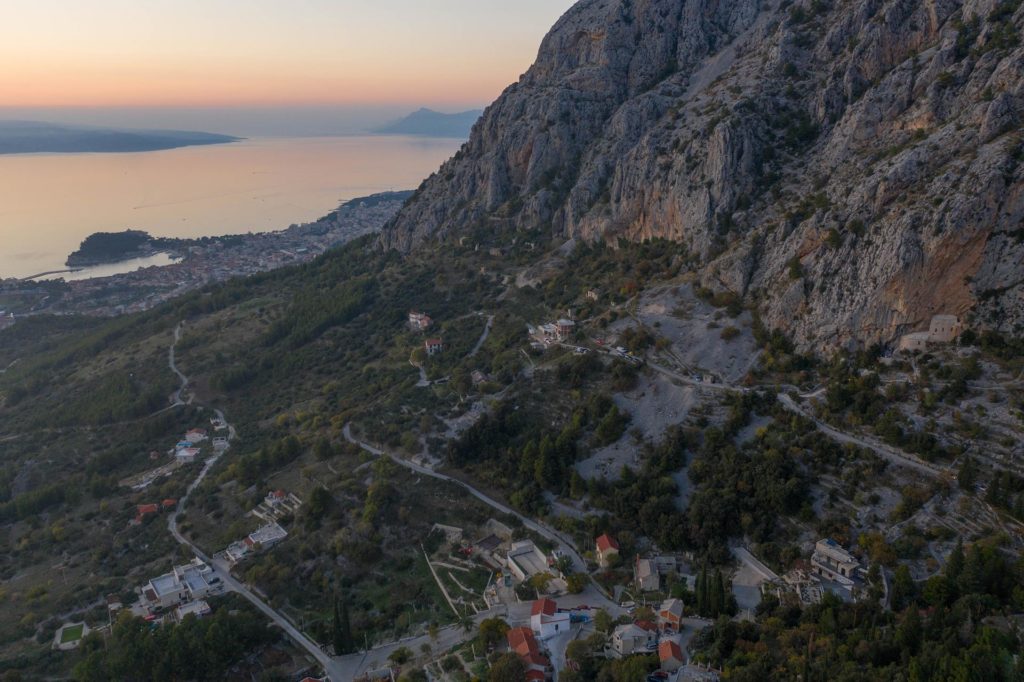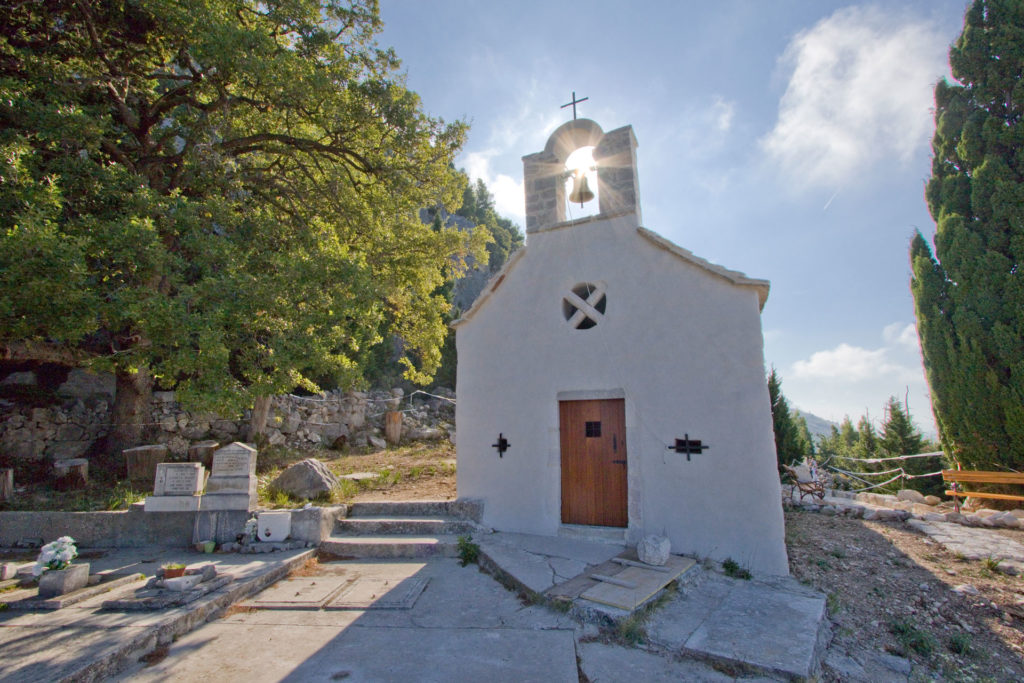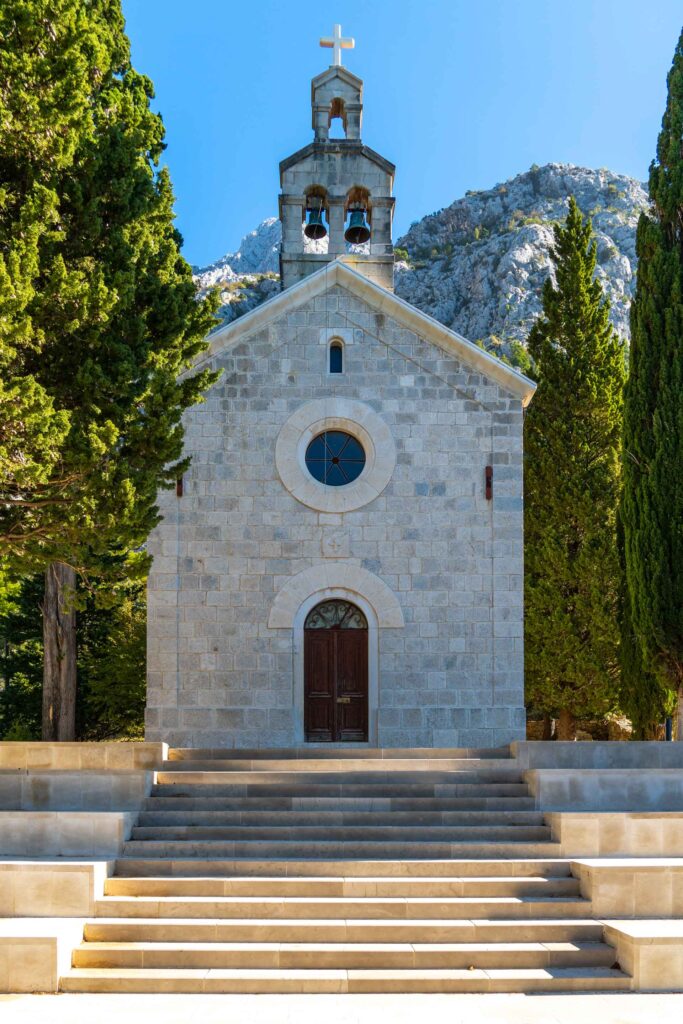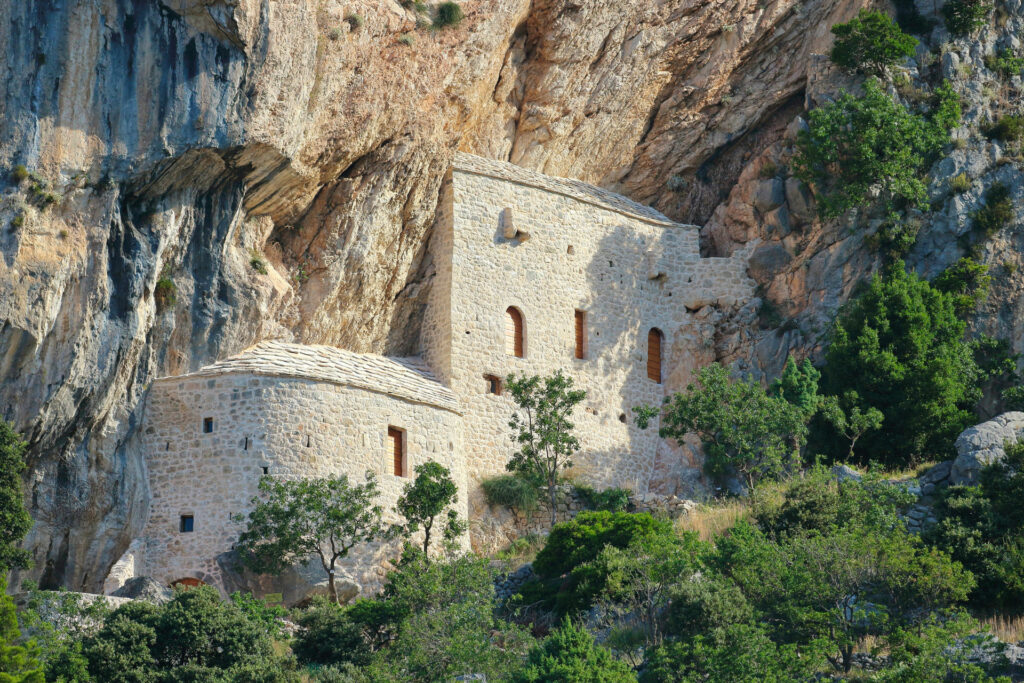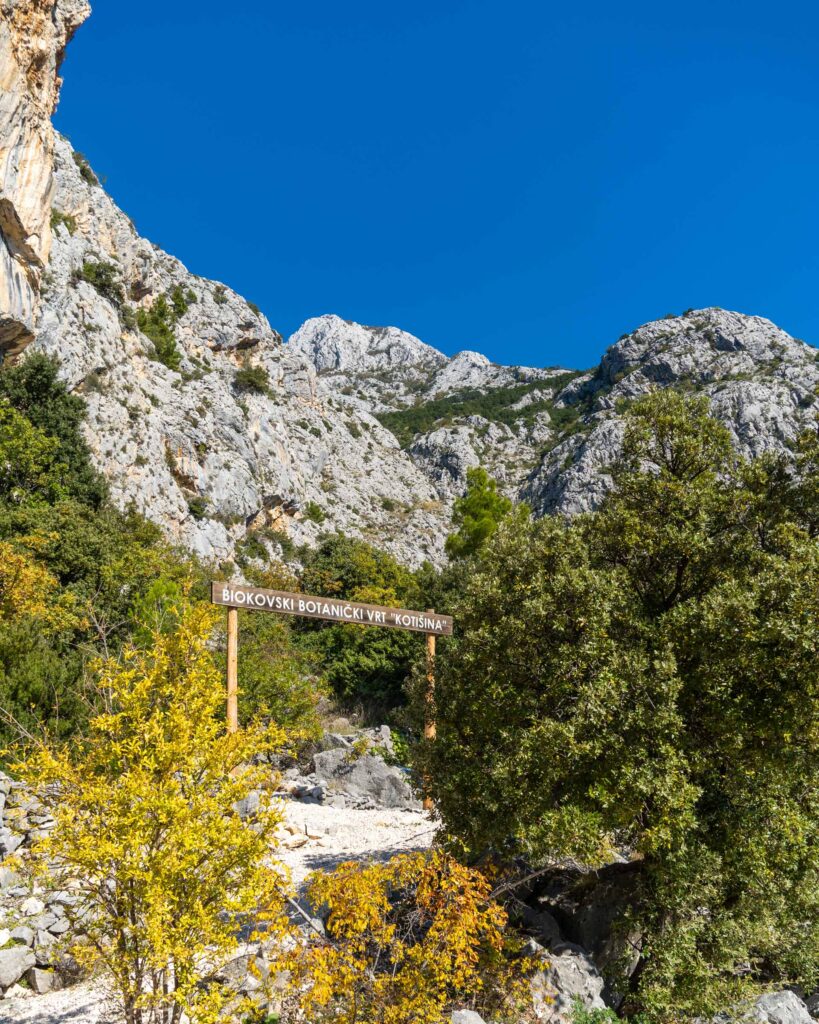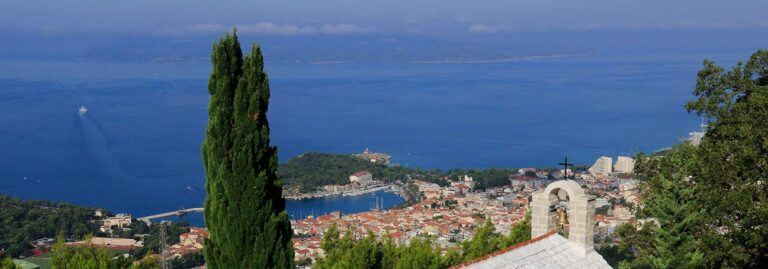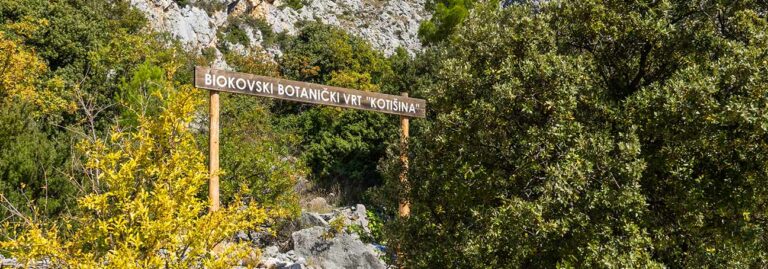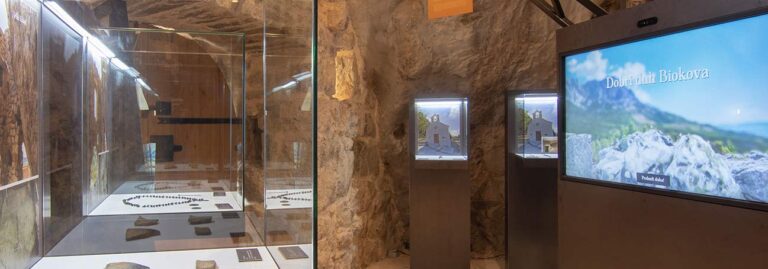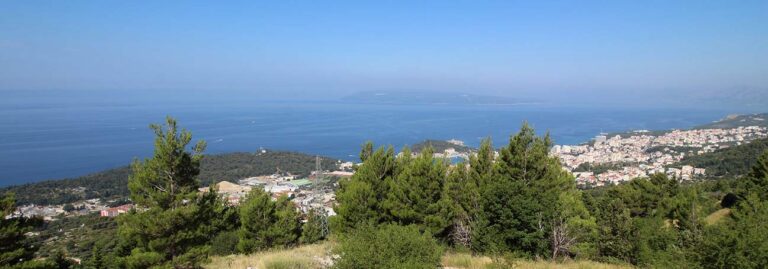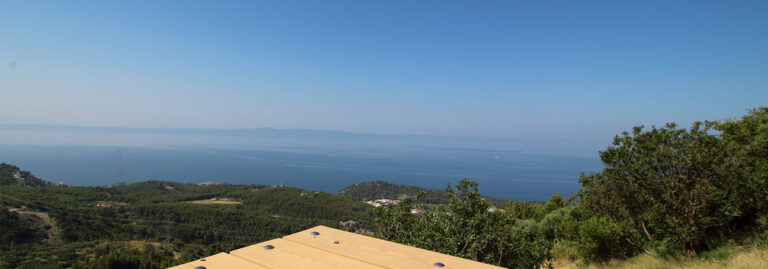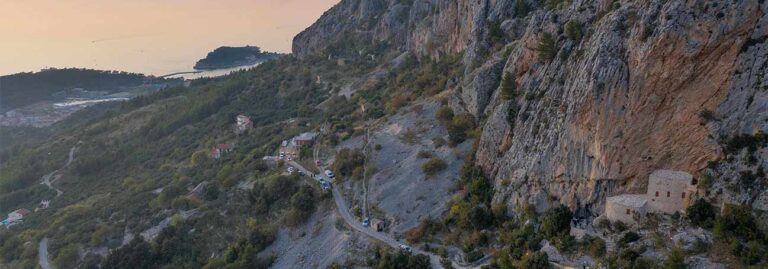KOTIŠINA
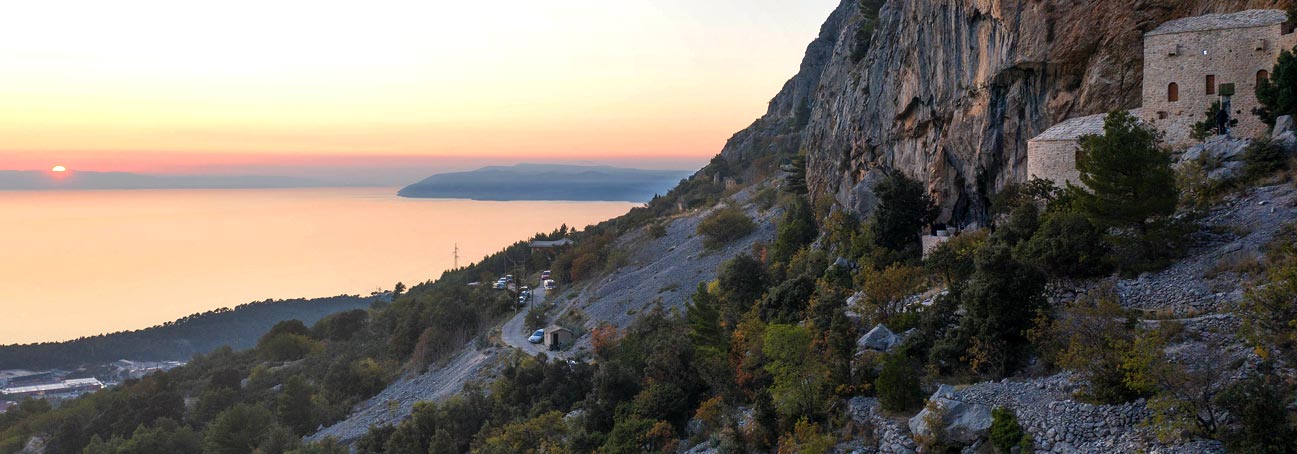
KOTIŠINA
The village of Kotišina developed at the foot of the cliffs of Biokovo, here at the most elevated in its massif facing the sea. It is mentioned in a written document at the end of the Middle Ages, in 1434., but it was inhabited as early as the Bronze Age (2200-800 BC). It was then buried in stone tumuli on Zagon, the southern approach to the village. Remains of habitats have been observed in Bučevica and in a cave inside Veliki Kaštel. In it, archaeological research in 2018 confirmed the Bronze Age cultural layer. Rocky Double War (173 m / nm) and a lower position near the church of St. Andrew had the function of observatories of land and coastal communications during prehistory and late antiquity. Since that time, trails through Biokovo have been used as connections with villages in the inlands.
In Kotišina, residential and commercial buildings with external stairs have been preserved, authentic examples of traditional architecture at the foot of Biokovo. They were erected in 18th –19th century when the village, also called the suburbs of Makarska, had 600 inhabitants. In the middle of the 20th century, a monument to the victims of fascism was erected along the road.
CHURCH OF ST. MARTIN
On the elevated western approach to the village, church of St. Martin was erected in the 13th –14th century. The Romanesque style of the church with a semicircular apse reveals the construction much earlier than its first mention in 1627. The church was extended in the late 17th or early 18th century with the introduction of modest Baroque stylistic elements. Its restoration in 2019 was accompanied by archaeological excavations of graves inside and outside the church. They have proven the continuity of the cemetery next to the church since the Middle Ages. Next to the church is the Foot of St. Martin, European landmark of monuments dedicated to St. Martin, the Bishop of Tours.
CHURCH OF ST. ANTHONY
Church of St. Anthony above the centre of Kotišina is a harmonious neo-style construction from 1901-1903. During its renovation in 2019, archaeological excavations revealed the basic remains of an earlier church from the second half of the 17th century, and its additions from the 18th century.
VELIKI KAŠTEL
The large castle along the cliffs of Biokovo is a multi-storey fortification adaptation of a cave and a raised building from the time of the Candian War (1645-1669). It was built by local forces under the supervision of Venice to unite the military and refugee role, a shelter for the population in the then conflict with the Ottomans. After the renovation and reconstruction of its interior in 2019, the exhibition and presentation centre under the management of the City Museum is located in the castle. To the west, within the crevice of the cliffs, the Little Castle was built in the 17th century.
BIRTH HOUSE OF FATHER PETAR PERICA
In the ambient centre of the old village, the birth house of the Kotišina born and descendant of the ancient Kačić tribe, Father Petar Perica, a Jesuit, poet and martyr (1881-1944), author of extremely popular songs, has been restored.
BIOKOVO BOTANICAL GARDEN
Biokovo botanical garden Kotišina is a mountain botanical garden located in the hamlet of Kotišina, on the slopes of the mountain Biokovo and is an integral part of the Biokovo Nature Park. It was founded in 1984 on the idea of dr. Fr. Jure Radić, his associates and volunteers, and was conceived as “Biokovo in miniature”. The garden is specific with its appearance and characteristics because it contains around the native flora that is indigenous to the area of the Nature Park and Podbiokovlje. On a relatively small area of 3.5 ha, you can find various habitats of rocky, sipari, arable land, cliffs and the canyon Proslap, where during heavy rains, a waterfall of the same name is created. About 250 different plants can currently be seen in these habitats, many of which are endemic or strictly protected species. Since all species are native, in any part of the year, regardless of climatic conditions, flowering plants can be seen, so this garden bears another name “Garden of twelve flowering months”. Seven zones of the garden (Plants of Biokovo gorges, Plants of Biokovo rocks, Medicinal plants of the Biokovo area, Agricultural plants and cultures, Plants of wider areas, Plants of sipari and Other plants of Biokovo) are connected by footpaths, where in some places there are educational boards and benches for rest.

